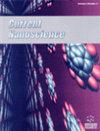Strategy for Targeting Medical Diagnosis of Cerebral Ischemia Regions by Linking Gsk-3β Antibody and RVG29 to Magnetosomes
IF 1.5
4区 材料科学
Q4 BIOTECHNOLOGY & APPLIED MICROBIOLOGY
引用次数: 0
Abstract
Background: In our previous studies, we have identified Gsk-3β as a crucial target molecule in response to Danhong injection for cerebral ischemia intervention. Furthermore, it can serve as a molecular imaging probe for medical diagnosis. Bacterial magnetic particles (BMPs), synthesized by magnetotactic bacteria, are regarded as excellent natural nanocarriers. Methods: In this study, we utilized biological modification and chemical crosslinking techniques to produce a multifunctional BMP known as "RVG29-BMP-FA-Gsk-3β-Ab", which exhibits both magnetic properties and brain-targeting capabilities. Then, a combination of analytical techniques was used to characterize the properties of the multifunctional BMPs. Finally, we evaluated the cell targeting ability of the RVG29-BMP-FA-Gsk-3β-Ab. Results: The multifunctional BMPs were observed to possess uniform size and shape using TEM analysis, with a particle size of 70.1±7.33 nm. Zeta potential analysis revealed that the nanoparticles exhibited a regular and non-aggregative distribution of particle sizes. Relative fluorescence intensity results demonstrated that the complex of 1mg of RVG29-BMP-FA-Gsk- 3β-Ab could bind to FITC-RVG29 polypeptide at a concentration of 2189.5 nM. Cell viability analysis indicated its high biocompatibility and minimal cytotoxicity. The RVG29-BMP-FAGsk- 3β-Ab was observed to possess active targeting towards neuronal cells and fluorescence imaging capabilities in vitro, as evidenced by fluorescence imaging assays. The complex of RVG29-BMP-FA-Gsk-3β-Ab exhibited favourable properties for early diagnosis and efficacy evaluation of traditional Chinese medicine in treating cerebral ischemia. Conclusion: This study establishes a fundamental basis for the prospective implementation of multimodal imaging in traditional Chinese medicine for cerebral ischemia.Gsk-3β抗体和RVG29与磁小体连接靶向脑缺血区的医学诊断策略
背景:在我们之前的研究中,我们已经确定Gsk-3β是丹红注射液干预脑缺血的关键靶分子。此外,它还可以作为一种分子成像探针用于医学诊断。细菌磁性颗粒(BMPs)是由趋磁细菌合成的一种优良的天然纳米载体。方法:利用生物修饰和化学交联技术制备多功能BMP“RVG29-BMP-FA-Gsk-3β-Ab”,该蛋白具有磁性和脑靶向性。然后,结合分析技术来表征多功能bmp的性质。最后,我们评估了RVG29-BMP-FA-Gsk-3β-Ab的细胞靶向能力。结果:透射电镜观察到多功能bmp具有均匀的大小和形状,粒径为70.1±7.33 nm。Zeta电位分析表明,纳米颗粒的粒径呈规则的非聚集分布。相对荧光强度结果显示,1mg RVG29-BMP-FA-Gsk- 3β-Ab复合物能以2189.5 nM的浓度与FITC-RVG29多肽结合。细胞活力分析表明其生物相容性高,细胞毒性小。通过荧光成像实验,RVG29-BMP-FAGsk- 3β-Ab具有对神经细胞的活性靶向和体外荧光成像能力。RVG29-BMP-FA-Gsk-3β-Ab复合物在中药治疗脑缺血的早期诊断和疗效评价中具有良好的性能。结论:本研究为脑缺血中医多模态显像的前瞻性应用奠定了基础。
本文章由计算机程序翻译,如有差异,请以英文原文为准。
求助全文
约1分钟内获得全文
求助全文
来源期刊

Current Nanoscience
工程技术-材料科学:综合
CiteScore
3.50
自引率
6.70%
发文量
83
审稿时长
4.4 months
期刊介绍:
Current Nanoscience publishes (a) Authoritative/Mini Reviews, and (b) Original Research and Highlights written by experts covering the most recent advances in nanoscience and nanotechnology. All aspects of the field are represented including nano-structures, nano-bubbles, nano-droplets and nanofluids. Applications of nanoscience in physics, material science, chemistry, synthesis, environmental science, electronics, biomedical nanotechnology, biomedical engineering, biotechnology, medicine and pharmaceuticals are also covered. The journal is essential to all researches involved in nanoscience and its applied and fundamental areas of science, chemistry, physics, material science, engineering and medicine.
Current Nanoscience also welcomes submissions on the following topics of Nanoscience and Nanotechnology:
Nanoelectronics and photonics
Advanced Nanomaterials
Nanofabrication and measurement
Nanobiotechnology and nanomedicine
Nanotechnology for energy
Sensors and actuator
Computational nanoscience and technology.
 求助内容:
求助内容: 应助结果提醒方式:
应助结果提醒方式:


